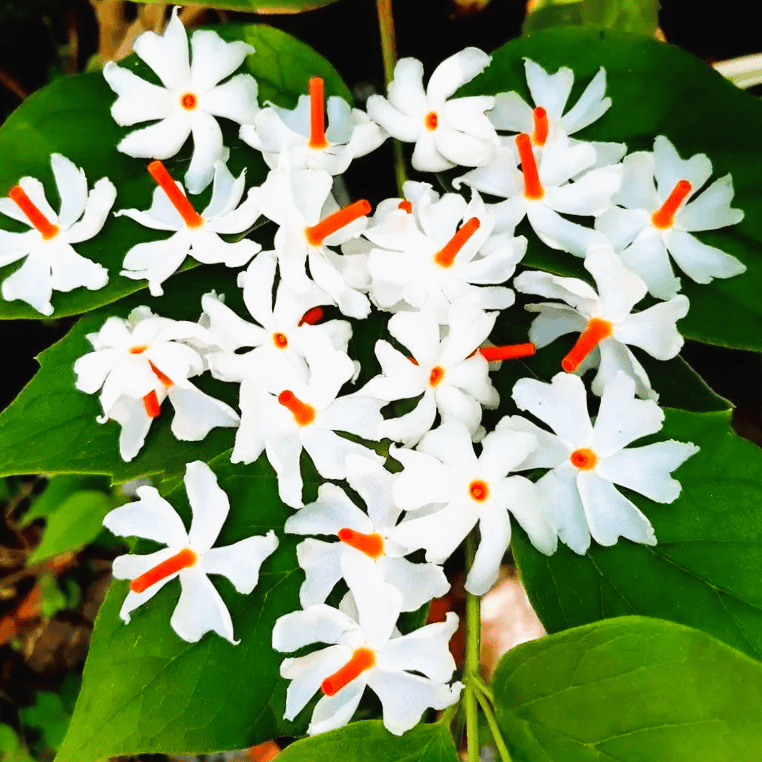
If you are looking to add a tropical vibe to your interior, nothing beats the astounding Areca Palm. With its arching, fringy fronds to its deep set green leaves, they are sure to remind you of your last beach escapade experience. A passionate lover of bright, filtered light and ample humidity, these Madagascar natives are a favourite among plant-lovers and interior designers alike, purely because of their striking foliage, dramatic appearance and non-fussy care nature. Once a purely outdoor variety, they have successfully established their domain into interior spaces with monotone backgrounds and privacy screens.

Would you believe if we tell you, they were once an endangered species!? Now if you look around closely, you might find a stunning Areca just about anywhere. From offices to shopping malls, Areca Palms have infiltrated the essence of a lush interior with their stunning foliage and run-for-money air purifying benefits. Yeah, you heard it right! They are some of the best air-purifying plants that are known to significantly remove effective concentrations of toxins in the air, making your home not only beautiful but also healthier. What’s more, they are super easy to maintain and thrive graciously even in neglect.
That being said, let’s hop on to know a little more about this gorgeous plant.
Unlike numerous other houseplants, Areca Palm is a statement plant. It exhorts attention wherever it is placed with its eye-catching foliage cover. Even though well-established palms hardly need the care of an overly paranoid plant parent, young plants do need a little extra attention to properly establish themselves to combat stress on their own.

Light: A major deciding growth factor for these plants is light. They love sunlight, but they cannot tolerate the direct sun rays. Make sure to keep them in locations where there is plenty of filtered light for at least 4-5 hours per day for uniform and green growth. Direct rays of the sun tend to turn the ends dry, crispy and yellow.Large living spaces, open balconies with indirect light, flooded bedrooms are some of the best locations to keep an Areca Palm plant.
Water: Though tolerant to dry and drought conditions, Areca is not a forgiving plant if overwatered. Leaves tend to droop and turn brown if the plant is sitting in too much moisture. An ideal way to know when to water the plant is to check when the top 2 inches are dried off, which takes some time between 7 to 10 days. Give the plant a thorough drench, and it will be good to go for the next week and half.

Humidity: Low on watering and high on humidity is the Areca mantra. They love warm and moist conditions for their leafy fronds. Make sure to mist them every alternate day thoroughly or place a humidifier near them for best results. Make sure to keep them away from air-conditioners and places where they can be subjected to cold drafts. Sudden change in temperatures leads to black spots on the leaves.
Soil and Fertilization: Arecas are heavy feeders and with the spring being a predominant growing season, make sure to supplement them well with high-nitrogen liquid fertilizers. Make sure you read the dilution concentration before applying. Do not fertilize during winters when the plant goes into dormancy. Over-fertilization leads to leaf burn.
Bring the tropical vibe to your home with the astounding Areca Palm here.
With the care in control, let's talk about pests, and Arecas are no stranger to those pesky little bundles of disaster. Mealy bugs to Spider mites, these are some of the most common arthropod pests and problems you might face with Areca Palm.
1. Mealy Bugs are some of the most common pests to appear on Areca Palm. White, fluffy and soft-bodied insects, they infest in clumps and drain out the plant nutrients. Neem Oil treatment is one of the most organic and effective methods to get rid of these bugs.
2. Spider Mites are often unnoticed until the plant gets too sick, due to their small appearance. Yellow leaves and speckled leaves are some of the most common symptoms of Spider Mites. An insecticidal soap wash is very effective in removal and prevention from future attack.
3. Thrips are small insects that often attack this plant, especially during monsoons. They feed on the leaves leading to curled, distorted leaves with silver-gray scars on them. Insecticidal soap solution is very effective in thrip removal.
Still unsure about this stunning statement piece for your home? Areca is one impactful plant that will not keep your home healthy, because of it’s amazing air cleansing properties, but also brighten up any idle space with it’s lush green foliage. Another added advantage is that it is completely pet friendly, so you don’t have to worry about making your paw friends fall sick.


